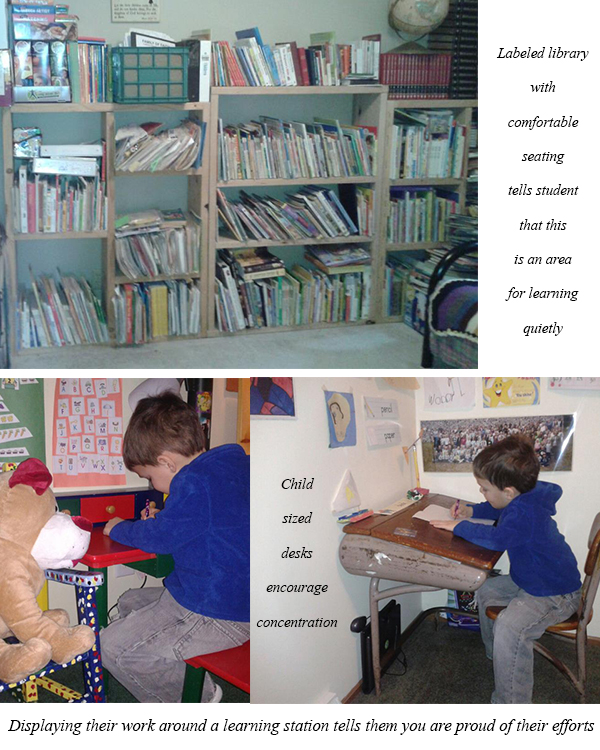Working in ginormous Hollywood mansions, to one room Michigan school programs, I’ve noticed chaotic behaviors coming out kids! Does this mean all kids =chaos? No, because I’ve also worked with kids in such environments and felt calm walking in the doors. So what was the difference between other spaces? Lots of factors, but one lesson learned was that it’s not the size of the space that matters, it’s how you use it.
In previous blogs I rambled about how keeping free play toys and activities on a rotation keeps less materials out for clutter and encourages kids to care for their own materials. Keeping items on a rotation also encourages use of different skills and uses of different senses… but consider what might over sensitize them. For example – if you put out the loud music making toys, turn off the TV and let them focus on the music activity. In fact – turn off the TV whenever your child is engaged in any play to encourage concentration. Kids who are engaged are less likely to be acting out.
Now, here is where both parents and providers confuse play with chaos and have kids sit and play a video game before letting them dump a box of toys on the floors… Play does NOT have to be calm for less chaos. Kids NEED to play without restraint and explore and be hyper and happy and create and use their imagination… Kids NEED to make a mess. The way to keep play happy and fun and avoid the chaos – is to structure play. Let kids know when you expect them to work (chores, homework, etc) and when free play will be schedule (the younger the child the more play-breaks needed). It also helps to let them know what choices they have to play with (2 options to start, then grow number of options).
Play time can create chaos if the child is bored playing alone or is having a hard time playing with others. learning to play with others and individually is a skill that takes practice, and if your still looking for ways to turn the chaos to calm – try focusing on play again and teaching “how to.” Engage in games, playdoh, blocks, doll houses, drawing, and cooking with your kids… But also encourage them to interact with such materials on their own. Create a space for play… and this includes a space to let off energy. If you don’t have open running space, can you find a spot for one of those small trampolines?
Now that we organized play time – make sure there is time and space – even for little ones – to focus and learn. Most parents and providers admit that the easiest time to do homework is at the table, before or after a meal, while the adult is cooking or cleaning and can periodically help while multi-tasking … but a different time/space may give a child the chance to re set their brain for what is expected of them. Research shows that if the seat is their size they can concentrate better. If you do not have access to a child-sized desk, kneeling on the floor at the coffee table may be a more size appropriate learning space. Then again, if the coffee table is in a busy area others are hanging-out in, and the kitchen is quiet, then that’s an option. Point is – consider the space and what you need a child to accomplish there. If the space is appropriate it will be less chaotic.
No matter how you arrange your space, and schedule your activities, there will still be times of chaos – so make sure you read next weeks blog for ideas on what to do when _ and how to create a calm down space. Between now and then take a look on our PINTEREST page for more ideas on turning chaos to calm in your home or center AND share your ideas with us!




Leave a Reply